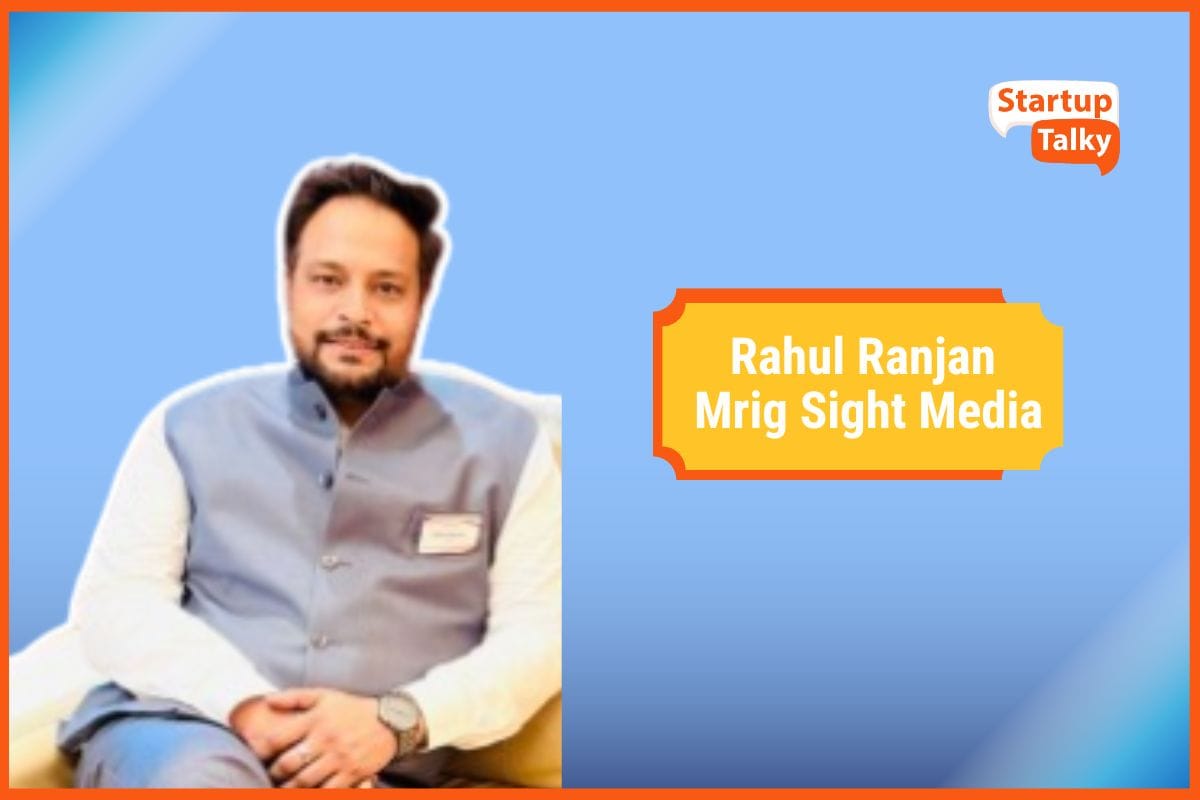The Idea, Strategy, And Approaches Behind the Success of Verloop.io
🔍Insights
The internet has empowered customer expectations and the boom in the service industry has to bring new tech-based applications to meet them. Conversational AI is a cost-efficient solution for all businesses to enhance customer service. For all businesses, from small-to-medium businesses to large enterprises, it reduces the staffing cost in the customer service department and improves customer satisfaction. AI-based solutions better understand the customers and offer relevant content that’s tailored to their personality. It helps in customized marketing to drive conversion.
Verloop.io is a Conversational AI platform to automate customer support. Here are the insights into the idea behind starting Verloop.ai and the growth strategy they have adopted for making it successful.
The insights are shared by Mr. Gaurav Singh, CEO & Founder, Verloop.io.
Why did you decide to go with the idea of chatbot?
At Verloop.io, we wanted to answer the fundamental question companies were asking at that time - how they could increase their profitability by providing better customer support. We realized that customer support as a category had been underserved by technology. While there were various tools available for marketing and sales, this segment was not getting the attention it deserved. Additionally, the technology developed for Customer Support till that time was mostly internal-facing/ process optimization - ticketing, QA sampling, etc. None of them enabled brands to build delightful customer experiences. We strongly believed that we could add value to the partner brands and help them offer a superlative experience to their customers.
Seven Years, How has been the journey so far? One big challenge you faced and how did you overcome it?
It has been an interesting journey for us so far to become the world's leading customer support automation platform that enables businesses to deliver delightful support experiences to their customers across channels. During this time, we helped brands to effortlessly, and accurately scale up their customer support in a secure manner. More than 5,000 brands globally, including Abu Dhabi Islamic Bank, Nykaa, Decathlon, Dar Al Arkan, Fetchr, DSP Mutual Fund, Rentomojo, and Scripbox are using our platform. Currently, our messaging layer can handle over 100k concurrent connections and can process over 4.3 million messages per second. We started our journey with just handful of employees and today our team has over 110 members.
One big challenge that we faced when we were starting out was that at that time, the awareness around Conversational AI enabling customer support teams was very limited. Most brands were unaware of Conversational AI and perceived it as a simple FAQ answering chatbots. Therefore, we had to build awareness and show them the value that we offered so that they understand the difference between Conversational AI and a simple FAQ or IVR bot.

How did you go about finding your first customer and product-market fit?
Like they say, finding our first customer is the most challenging. More than customers these also become your design partners and give critical feedback to shape the product in a way that the market does respond to. On our journey, we were blessed to have some great brands that gave us multiple inputs and validated our product features that helped us achieve PMF.
What are the different channels you use to generate leads? Please share any one growth hack which gives the most ROI?
We have a multichannel marketing campaign running that ensures we are able to have multiple touchpoints in our potential user’s journey. We run campaigns right from the top of the funnel (awareness) to the bottom of the funnel and even post-acquisition.
One growth hacks is to identify who truly is your audience is when it comes to generating leads.
Approaching enterprise clients, SMEs, and startups, requires a whole different strategy. Could you please share some tips for the same?
As you have mentioned, these are very different customers, and the buying process also differs. We have different playbooks across Product, Marketing & Sales for these. Our enterprise playbook is heavily relationship and outbound dependent while for the SME and startups is focused more on the inbound side.
What are a few KPIs you track for the company? How do you measure the performance of your bots?

For different brands, there are different KPIs that we follow. With Verloop.io, brands are able to answer data-driven queries without interfacing with customer support. It also enables human agents to access all information from a single platform. By doing this, businesses are not only able to resolve a larger number of queries but also increase agent efficiency through historical and contextual customer information.
Brands that have adopted Verloop.io have experienced a 2x jump in their Customer Satisfaction Scores (CSAT) and a 5x increase in the agent effectiveness within 3-6 months. There was also a significant drop in calls as automation deflected a lot of queries. This has resulted in annualized cost savings of more than $1 billion across our clients.
Could you please share some metrics on growth numbers and revenue metrics?
In 2020, Verloop.io leapfrogged to become one of the biggest chat automation processors in India. Continuing on the growth journey in 2021, we have increased our customer base by 5X this year. We have gained from experiences and continue to enable businesses to deliver delightful support experiences to their customers in multiple languages. At the same time, we offer an omnichannel approach so all our partners can offer a unified customer experience to their customers.
In terms of volumes, Verloop.io is now powering more than a million conversations on a daily basis across various platforms. During the course of this year, we have also set up offices in UAE, Singapore, and South Africa to be closer to our clientele while we make our solution available for customers worldwide.
How do you make decisions on partnership?
When we look for partnership, we look at two things. One is how well the partner is respected and trusted by its customers and secondly is there a true value being created when Verloop.io and the partner join hands. This has helped us in screening out the noise and focussing on the partners we believe can unlock tremendous value in terms of growth and reach not only for Verloop.io but for the end customer as well.
What’s your strategy to hire the right candidate?
As an organization, we believe that if you hire the right set of folks and treat them right, they will take care of your business/customers. While we are super focused on the skills we need to hire for, we look for the right fitment in terms of our values and our working culture.
Being a funded company, what would you advise the founders who are looking to raise funds?
I believe in the initial days itself the founders should have a clear idea of who they will be targeting. Another approach that I recommend to fellow founders is that rather than looking at pleasing all, they should focus on their product and how they can better it. This is essential, especially in the initial days. Instead of obsessing over the competition, or what competitors are doing, they should focus on the value add that they can bring to the table. Rather than spending time chasing VC, founders should invest it in increasing their top lines. If the foundation of the start-up is solid then there will have no dearth of people wanting to invest in it.
What are a few new areas where conversational AI tools will be used? Do you think, Is it possible to completely replace customer support with conversational AI?
Conversational AI makes perfect business sense for all B2C companies. At Verloop.io we have been focusing on industries where there are large volumes of pre-sales and post-sales support required. This typically includes retail businesses, e-Commerce, banking, financial, insurance, edTech, food-tech, travel, and logistics amongst many others.
In the last 10 years, there have been significant improvements in the natural language processing (NLP) and deep learning technologies that has given new amplitude to simulate human conversation and dialogues. To delight the customer, achieve excellent Net Promoter Scores and reduce their customer service cost, businesses too are investing heavily in innovating ideas.
With the prevalence of chatbots and customers becoming more amenable to talking to bots, voice-based bots are becoming the new mainstream. As advancements in NLP continue, chatbots will only get smarter and have more human-like interactions.
More than replacing, Conversational AI chatbots are designed to work in conjunction with the existing systems. The chatbots enable the system to get more efficient by handling a greater number of queries in a reduced time and cost. The focus here is to ensure that only escalations are passed on to human executives.
What’s your opinion about the Indian SaaS market in 2022?
The SaaS business is booming in India. A report by McKinsey and SaasBoomi has predicted that this industry will be worth $1 trillion by 2030 and India’s share to double by that time.
In my opinion, the Indian SaaS market is just starting up. With the recent funding(s), acquisitions, and listing, SaaS is now entering the growth phase in India. While typically India SaaS has sold to clientele outside India, this year will see a lot of Indian businesses engaging with Indian SaaS products. These are driven by SaaS organizations investing in better product leadership, great customer experience, and the advantage of being at the cutting edge of technology.
Must have tools for startups - Recommended by StartupTalky
- Convert Visitors into Leads- SeizeLead
- Website Builder SquareSpace
- Manage your business Smoothly Google Business Suite






